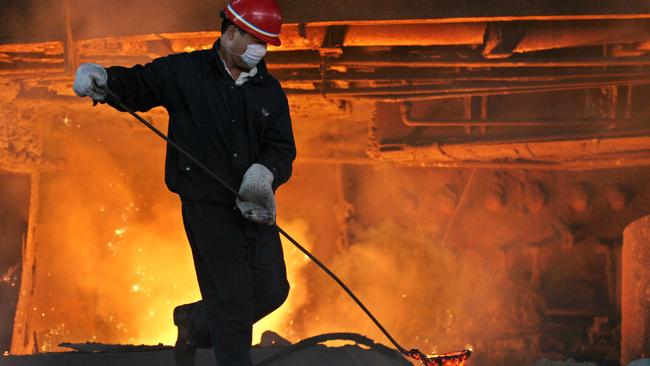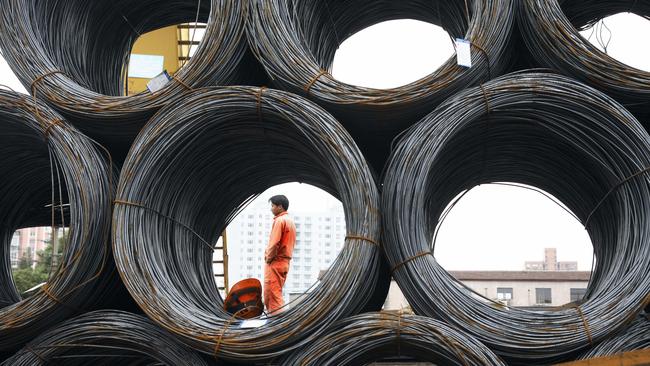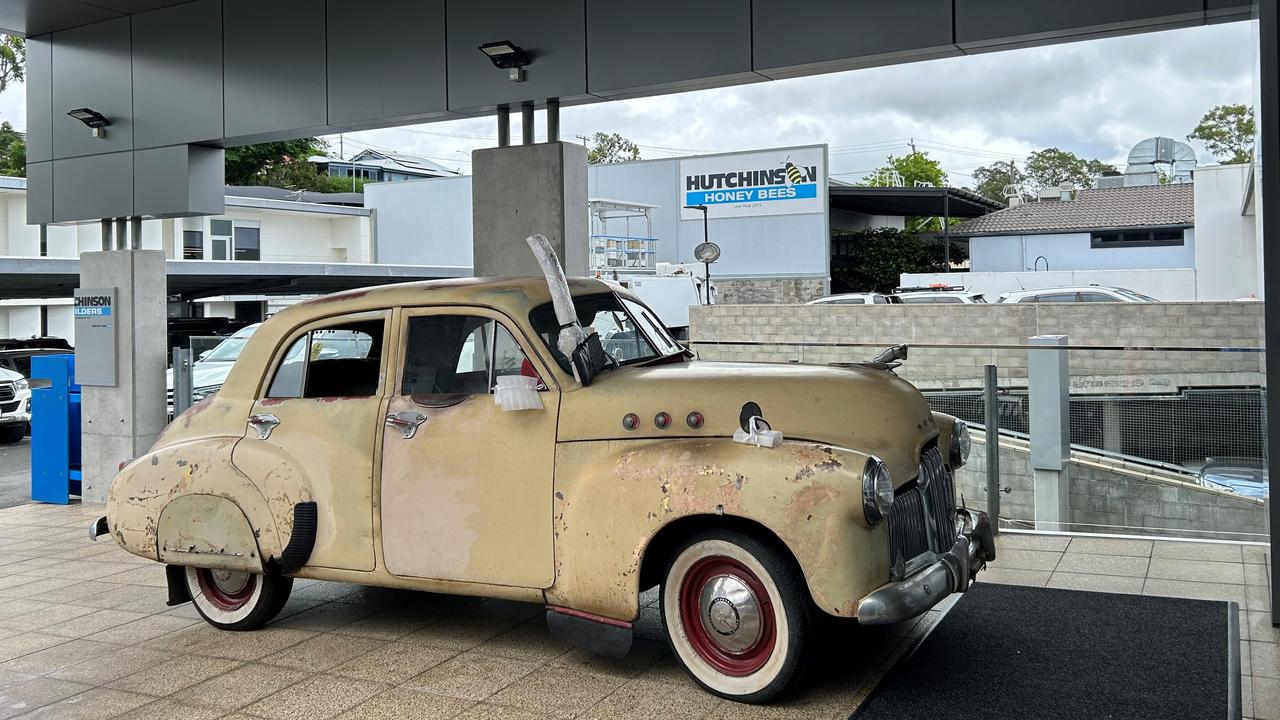Green steel could be a boom sector for Australia, but we need to be proactive says HILT CRC
Australia needs to establish a green metals network and funding to capitalise on the large opportunity posed by green steel and other metals, a cooperative research centre says.

Business
Don't miss out on the headlines from Business. Followed categories will be added to My News.
Australia needs to establish a green metals network, invest in research and development to de-risk new technologies, and fund enabling infrastructure to increase the supply of significant amounts of new renewable energy in order to capitalise on the large opportunity posed by green steel and other metals, a submission to the federal government argues.
The Heavy Industry Low-Carbon Transition Cooperative Research Centre (HILT CRC), in its response to the federal government’s call for submissions on the nascent green metals sector, argues that significant work needs to be done on both the technology and policy side of the equation.
With growing demand for products such as green steel (albeit a product that currently lacks a specific definition), there is a large opportunity for Australia, which has already articulated its desire to be a frontrunner in the hydrogen sector, to benefit.
There is also the risk that the major contribution to the nation’s prosperity from existing sources of revenue such as hematite iron ore could dwindle, as buyers globally move to less carbon-intensive steelmaking processes over time.
The CRC, led by former Australian Energy Market Operator and ExxonMobil executive Jenny Selway, has three work programs under way looking at the development of new processing technologies, crosscutting technologies such as carbon capture and storage, and a policy stream looking at what needs to be put in place to facilitate investment.

Ms Selway said the nation was a resources superpower, exporting about 40 per cent of the world’s iron ore, but this also meant it had a lot to protect – a contribution of “about $160bn to the Australian economy and about 160,000 direct jobs’,’ she said.
“There’s a lot that exists today that is really amazing for Australia, but also, increasingly, we’re seeing as the world starts to decarbonise, that’s potentially at risk.
“We have these huge potential renewable resources here as well that are world class, so that’s where this opportunity has come from – recognising that bringing those two together, there’s potentially a huge opportunity here.’’
The focus has also sharpened over the past couple of years with the realisation that exporting hydrogen appears difficult.
Using hydrogen produced in Australia for green steel production – substituting hydrogen for natural gas as the reducing agent in steelmaking – provides a use for the hydrogen and an indemand green product for the global market.
There are still technical, policy and large investment capital challenges to overcome, but the prize would also be large.
In South Australia, for example, there are billions of tonnes of magnetite iron ore that could be exploited, opening an entirely new iron ore province for the nation.
In its submission to the government’s green metals consultation, the HILT CRC says the nation’s “key future opportunity to supply clean processed products into international markets is likely in the form of green iron, supplied as an intermediate input to traditional steelmaking countries’’.
The CRC is conducting and has completed research into the global demand for green steel, the barriers to setting up an industry locally, and what sort of enabling infrastructure needs to be put in place to ensure the industry can be launched.
“We note that heavy industrial processes such as green iron/steel and alumina are capital-intensive industries with generally long lifetime assets so the investments will be large,’’ the submission says.
“Due to the scale, international investments will be needed, and Australian plants will have to compete globally to be the most attractive destination for this investment.
“The low-carbon transition for heavy industry will also require significant investment in enabling infrastructure, especially low-carbon, low-cost and reliable energy at scale.
“HILT CRC is beginning the process of developing scenario-based assessments to address this question based on multi-stakeholder assessments.’’

The CRC is also doing detailed modelling of hydrogen supply to regional industry hubs in areas such as the Pilbara, the Upper Spencer Gulf in South Australia, and northern Tasmania, looking at the infrastructure requirements and what the potential cost of delivered hydrogen would be.
In its submission the CRC is advocating for investment in R&D facilities to develop and derisk the technologies that will be used in green metals production.
“HILT proposes that the fastest, least cost and least risk way to develop these facilities is if they are co-ordinated nationally (and internationally) and involve industry, research and government working collaboratively, particularly on knowledge sharing,’’ the submission says.
“We believe that funding is needed across all three scales of facility, from research to pilot to demonstration scale, to provide complementary information and support each other.’’
These facilities would range in cost from less than $10m to more than $100m at the industrial demonstration scale, with those larger operations typically owned by private companies.
The CRC also wants money put up by the government to fund a Green Metals Network, which it says it would be well-placed to co-ordinate.
“For Australia to truly capitalise on the green metals opportunity afforded by the net zero transition will require more substantial investment, co-ordinated nationally, in order to establish a globally leading research and development ecosystem,’’ it says.
“A more comprehensive approach to investing in the research ecosystem will accelerate the rate at which new technologies are adapted to the bespoke conditions in Australia, drive understanding of how to lower cost and increase performance in the new processing pathways, and position Australia at the forefront of the supply of value-added materials for the net-zero economy.
“The bespoke nature of both the ore resources and the sector, together with the rapidly changing technology landscape, implies that focusing on a few isolated factors or single demonstrations is a high-risk strategy.”
More Coverage
Originally published as Green steel could be a boom sector for Australia, but we need to be proactive says HILT CRC




